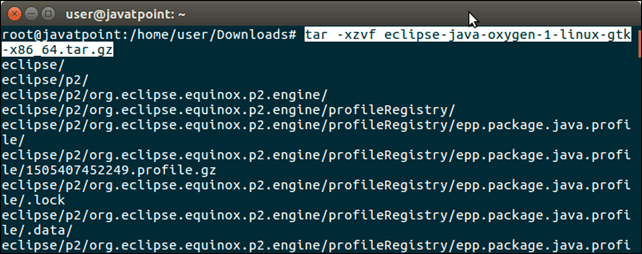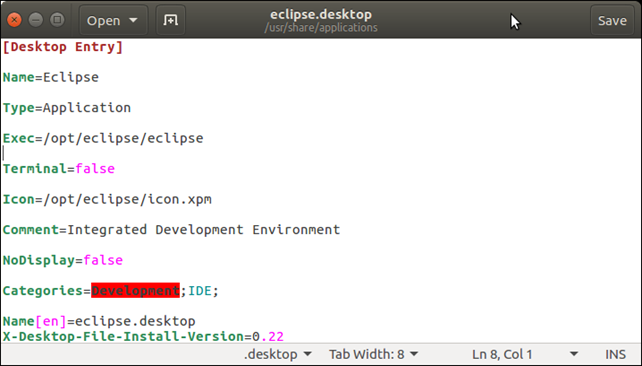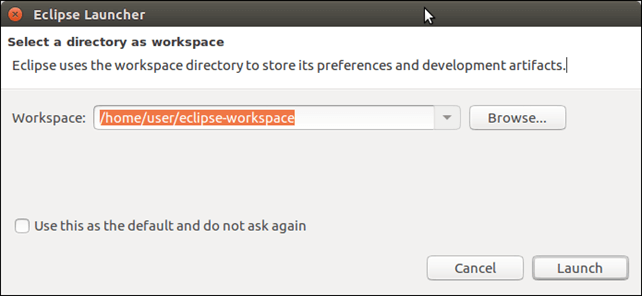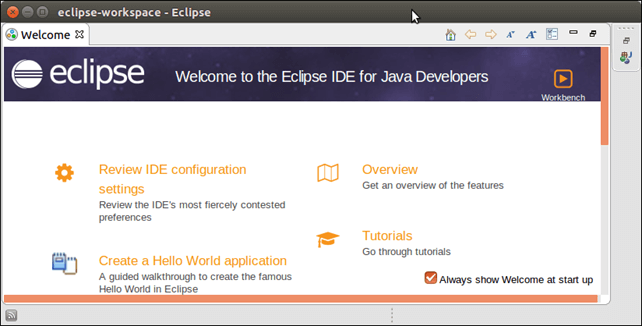How to install Eclipse on Ubuntu 16.04 LTS?IntroductionEclipse is an IDE (Integrated Development Environment) that is used to create software applications. It was primarily used for Java application but now we can make applications in other languages also by installing plug-ins. Eclipse Foundation maintains it's development, it is cross-platform and written in Java. We can install it on the Ubuntu but before that make sure our system fulfills all the prerequisites. It includes a plug-in system and a base workspace to customize the environment. For Java development, it's the second most famous IDE and was the most famous until 2016. Also, it can be used for developing documents with packages and LaTeX for the software Mathematica. Several development environments contain the JDT (Java development tools) for Scala and Java, Eclipse CDT for C++/C, Eclipse PDT for php, and others.
Eclipse SDK is open-source and free software, published upon the Eclipse Public License terms as it's not compatible with the GNU GPL. It was one of the initial IDEs to execute upon GNU Classpath and run without issues upon IcedTea. Architecture of EclipseEclipse utilizes plug-ins to offer every functionality on top of and within the run-time system. This run-time system is Equinox-based, where Equinox is an implementation of the core framework specification of OSGi. Additionally, to allow the Eclipse Platform to be continued using several other programming languages, like Python and C, the plug-in framework permits the Eclipse Platform to operate with typesetting languages, such as LaTeX and other networking applications, including database management system and telnet.
The Eclipse SDK contains the Eclipse JDT (Java Development Tools), providing an IDE and a built-in Java incremental compiler with a complete Java source file model. It permits advanced code analysis and refactoring techniques. Also, the IDE uses a workspace; this way, a collection of metadata on a flat filespace permits external file changes when the associated workspace resource is renewed afterward. Rich Client Platform To develop general-purpose software, Eclipse offers RCP (Rich Client Platform). The following elements establish RCP:
Web Tools Platform The Eclipse WTP (Web Tools Platform) project is an addition to the Eclipse platform using tools to develop Java EE and Web applications. It contains graphical and source editors for a range of languages, built-in applications, wizards to streamline development, and APIs and tools to support expanding, running, and checking tests. Server Platform For GlassFish, Tomcat, and other servers, Eclipse provides development and can install the needed server from the IDE directly. It offers remote debugging, permitting a user to see variables and processes using an application code that's running on the linked server. Modeling Platform This modeling project includes every official Eclipse Foundation project concentrating on model-based evolution technologies. Each is suitable with the Eclipse Modelling Framework established by IBM. These projects are divided into many categories: Amalgam, Research and Technology, Abstract Syntax Development, Concrete Syntax Development, Model Development Tools, and Model Transformation. The project, i.e., Model Transformation, uses EMF (Eclipse Modelling Framework) based models as the input and generates either a text or model as a result.
Projects can be detected implementations of many standards among those:
The project, i.e., Concrete Syntax Development, includes the Graphical Modeling Framework, which is Eclipse-based and committed to the EMF-based model's graphical representation. The project, i.e., Abstract Syntax Development, is used to host the Eclipse Modeling Framework, which is the core of almost every Eclipse Foundation modeling project and the framework present for EMF, such as CDO (Connected Data Objects), EMF validation, or EMF query. For the Eclipse package, the project, i.e., Amalgam, offers the integration and packaging between every modeling tool committed to modeling tools. The project, i.e., Technology and Research, is the Modeling project's prototype. This project hosts every Eclipse Foundation modeling project during the incubation phase. Application Lifecycle Management of EclipseIn Eclipse, task management and ALM (Application Lifecycle Management) require an optional element known as Mylyn, which is open-source employment of the task-focused interface. It offers an API for all tools enclosing the task-focused interface. It supports a developer to work well with several different tasks, including new features, problem reports, and bugs, for software developers. Tasks are unified into Mylyn. Mylyn checks user activity and attempts to recognize information associated with the task for every integrated task. It uses the task context to concentrate on the Eclipse UI on the corresponding information. Mylyn integrates with several repositories, like GitHub, Unfuddle, JIRA, Mantis, Redmine, Trac, and Bugzilla. It concentrates on developing productivity by decreasing navigation, scrolling, and searching. Also, Mylyn is meant to provide sharing expertise, reusing past attempts, planning, and multitasking. The project title originates from myelin, which is an insulating layer electrically that surrounds the axons of neurons. The actual title of this project is "Mylar", duplicated a boPET film company trademark, so the Eclipse Foundation modified the project title. Alternative Distributions of EclipseMany alternative distributions are available in the Eclipse project.
For the Eclipse platform, PHP Development Tools offers a framework. This project encompasses every development component, such as developing PHP, code completion, and providing extensibility. It pulls the available Eclipse WTP (Web Tools Platform) and DLTK Dynamic Languages Toolkit.
In 2015, ADT (Android Development Tools) was superseded by the own plugin of Eclipse Foundation, known as Andmore: Development Tools for Android, when Google stopped their plug-in development for the Eclipse IDE, that's developed to offer a unified environment where to create Android applications. Andmore/ADT extends the Eclipse abilities to allow developers to set up new Android projects, build an application UI, include Android Framework API-based packages, export signed .apk files to share their applications, and debug the applications with the Android SDK tools. It is available free to download. For Android, ADT of Google was the official IDE until 2015, but it was substituted by Andmore of Eclipse and the official Android Studio. Prerequisites
The installation process includes the following steps. Eclipse InstallationVisit official site of eclipse http://www.eclipse.org and download a zip folder. After downloading, locate to the download folder and extract folder. Use the following command to extract folder. 
Move Eclipse to /opt/ directory. Create a desktop file Enter following details to this file. 
Install desktop file. change directory to the /usr/local/bin/ 
After launching, it shows start-up page that looks like the below. Create a symlink Now, open eclipse from Application Menu. It prompts for workspace location. Provide location and launch the application. 
Next TopicHow To Install chrome In Ubuntu
|
 For Videos Join Our Youtube Channel: Join Now
For Videos Join Our Youtube Channel: Join Now
Feedback
- Send your Feedback to [email protected]
Help Others, Please Share










